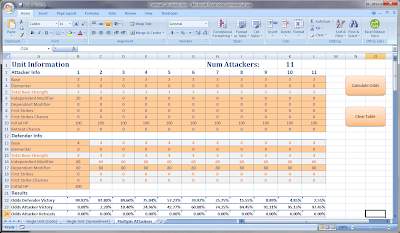Every civilization is lead by a leader. The leader has some number
of traits, which change the base
rules for that player. Traits vary in
power. Some civilizations have access to more than one leader, and a
civilization's various leaders will have differing traits. Most commonly, a leader will have 2 traits.
Leader traits in Civilization are so effective because they
can completely change how you approach the game. They help diversify the number of competitive
strategies, and add a healthy variance to the game. Therefore, when I am designing traits, those
are the sorts of effects I want to create. However, not all traits are created
equal. The financial trait is causing me
no end of headaches in developing Erebus in the Balance.
The financial trait doubles the speed of markets (an early
building that gives gold) and moneychangers (a mid-game building which boosts
gold production with a modifier).
Additionally, in every tile,
if the tile produces 2 or more commerce, it will produce an additional
commerce. 2 commerce tiles are fairly
common in CIV, so the end result is that Financial produces a 50% increase in
commerce for many tiles.
Ironically though, outside of the balance concerns, financial
would otherwise be a model trait. It
clearly distinguishes itself from other traits by providing a type of bonus
that no other trait does (a direct tile yield change). It changes a player's game plan dramatically,
and encourages a player to plan around leveraging the trait to maximize its
effect.
Organized is a good counterexample to financial. Organized doubles the speed of courthouses (reduce
city maintenance by 50%) and lighthouses (+1 food from water tiles), and
reduces civic upkeep by 50%.
It is a solid trait with a reasonable level of power, but isn't
very exciting. Its effects are primarily
under the hood. The player knows that
his empire is more efficient, but he's not doing anything much different from
his standard gameplan. In other words,
the player does not need to behave differently to leverage his advantage from
being organized, beyond simply stepping up the time-frame of all of his plans.
Financial poses the larger problem to me. It is a good trait, encourages a different
style of play, but is so strong that it distorts the leader trait choices in
multiplayer. In general, the games on RBCIV
can be loosely classified into two groups: games where financial leaders are banned
and games where they are allowed. In
games where they are allowed, financial leaders dominate the picks. While organized isn't a model trait, at least
it doesn't destabilize the leader-pick meta-game.
Considering this, I realize that there was an important point I left off
my initial list.
A "good" trait:
- Creates space for new and competitive strategies
- Encourages players to play to their trait's strength to unlock its full potential
- Is not a must-have for every possible competitive strategy








